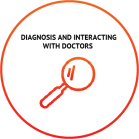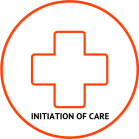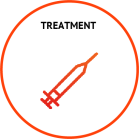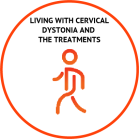5 key stages in the cervical dystonia patient journey
Together with the European Reference Network for Rare Neurological Diseases (ERN–RND) and Ipsen, we developed the first ever patient experience map for cervical dystonia, describing the five key stages of the patient journey and locating gaps in healthcare systems and barriers to optimal care for patients.

The map identifies the most urgent updates to healthcare systems needed to ensure patients are accessing multidisciplinary care: improved communication, easy-to-access quality information on cervical dystonia and clear treatment pathways being central themes.
The following people were filmed during Dystonia Europe’s Dystonia Day Conference from 20-21 May in Copenhagen. They include members of Dystonia Europe, people living with cervical dystonia and their carers, describing their personal experience and key aspects of the patient journey.
“Number one that I always talk about is time of diagnosis”

Stage 1: First symptoms appear
and the journey begins
Symptoms of cervical dystonia begin to appear and disrupt daily life. Multiple visits to different healthcare professionals with a range of suspected diagnoses are common. The symptoms frequently carry stigma and require support from care-givers.
“I was very lucky, I think, because I got a very quick diagnosis…”

Stage 2: Diagnosis and interacting with doctors

Stage 3: Initiation of care
Treatment options are limited and referral for complementary services such as physiotherapy is inconsistent and can be delayed. Support for patients in the community is also important.
“The sooner a patient gets treatment, then the better,
because dystonia can develop…”

Stage 4: Treatment
Patients report a ‘rollercoaster’ of relief with botulinum toxin injection treatment, with symptoms returning towards the end of an injection cycle. Managing progression of the disease requires a joint approach, also involving physiotherapy and psychological support.
“My doctors in one hospital, they actually didn’t know
what to do…”

Stage 5: Living with cervical dystonia
and the treatments
Many people develop acceptance about living with the condition, with some fears for the future – especially as they continue to age. Involving patients in research and decision making about care are especially important.
“I really think that patients should be involved from
the start in the preparation of trials…”
